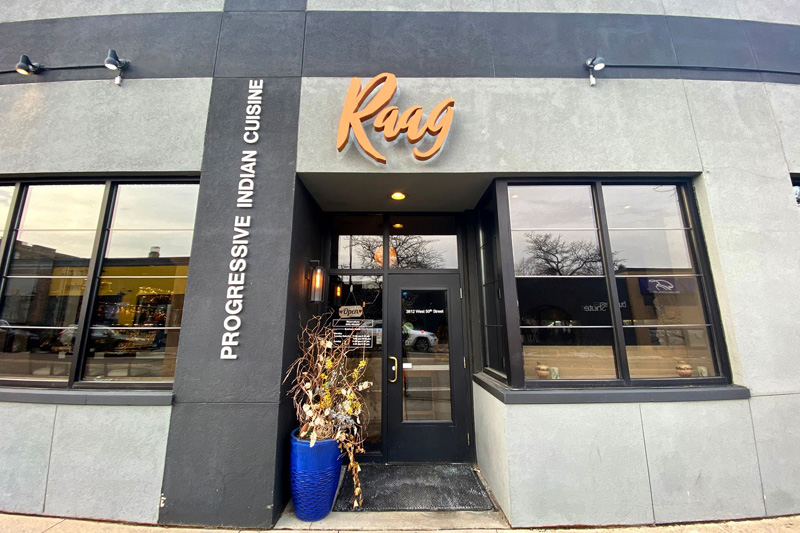PHOTOS BRENDA JOHNSON / HEAVY TABLE EXCEPT LOBSTER (JOSHUA PAGE / HEAVY TABLE)
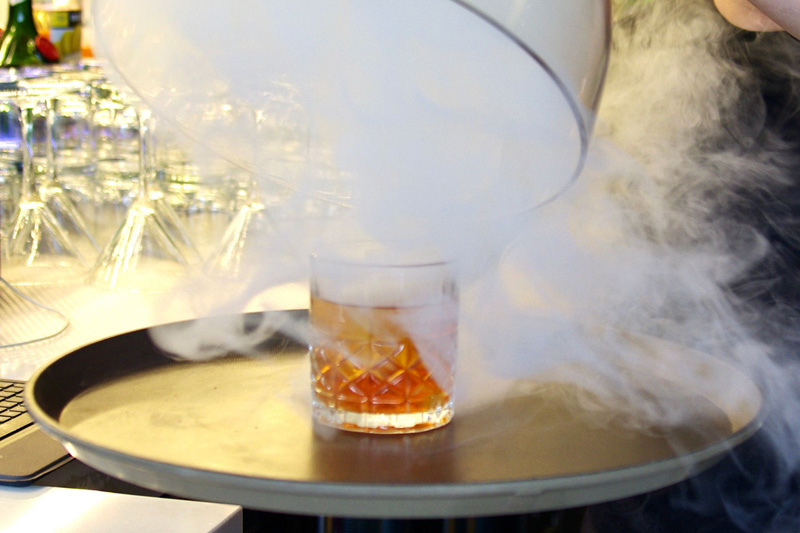
“Whoa, cool,” I said, sounding like Sean Penn’s stoner-surfer character in Fast Times at Ridgemont High. Our server had just lifted a plastic dome off a tray, releasing thick, cinnamon-scented smoke and unveiling The Kerala Spice Trail ($13). Mixed with citrus and cinnamon (the “Kerala spice”), the smoky, bourbon-forward cocktail is Raag at its best: fun, attractive, well-prepared, tasty.
The seabass entree ($34), on the other hand, is Raag is its worst. It might make sense at a nouveau riche wedding where catering limitations demand cookie cutter leaps toward culinary excellence, but not at an Indian restaurant which claims to be “pushing the boundaries.” The large, properly cooked piece of fish was topped with a flavorless mixture that resembled Shake ‘n Bake crossed with Thanksgiving stuffing. A wee salad (dressed greens, two cherry tomatoes, and a slice of radish), three baby carrots, and three thin pieces of asparagus did the fish no favors.
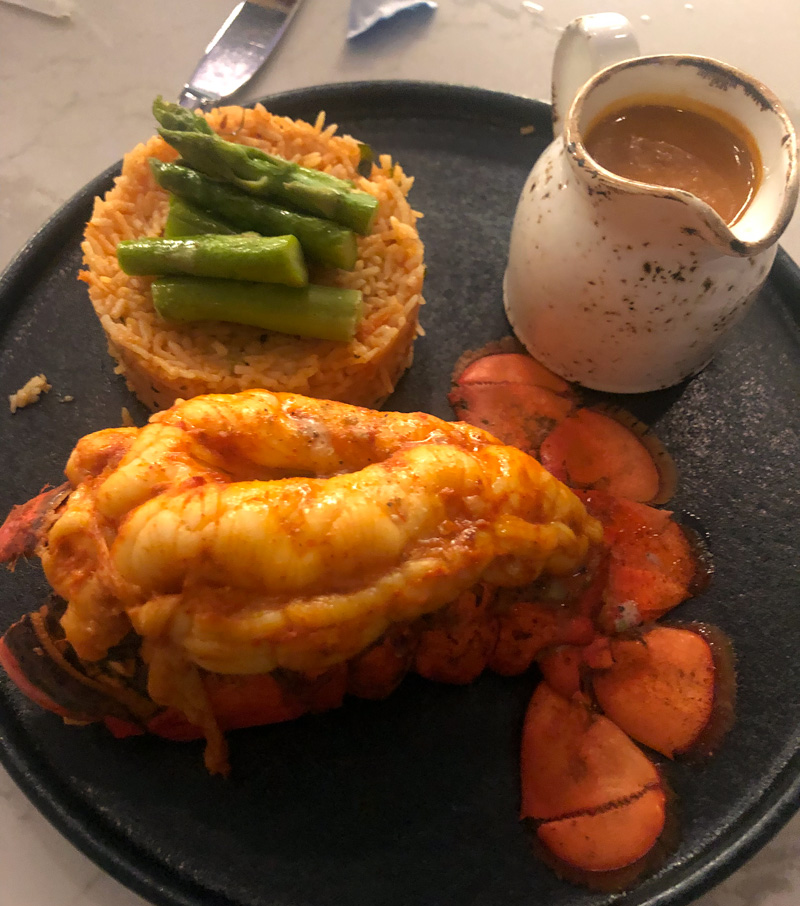
The lobster tail was similarly disappointing. At $38, I expected greatness, not more wedding food. Although the large tail was cooked expertly, it was hard to differentiate from others I’ve had at average seafood joints. The spice rub was far too shy and a fancy-sounding sauce (mango, coconut, cumin, and garam marsala) failed to liven things up. The accompanying “aromatic” rice, molded into a hockey-puck-sized cylinder and topped with a cut-up stalk of steamed asparagus, was utterly forgettable.
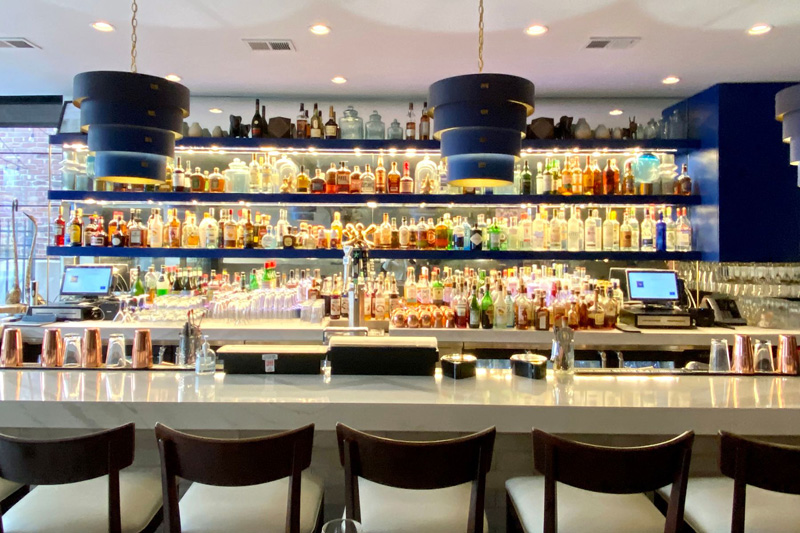
These and other dishes fell far short of the exceptionally high expectations Raag sets. Located near 50th and France in Edina, it claims to be a “destination” restaurant doing nothing short of “creating a new identity for Indian food.” In practice, this means leaning into fusion, incorporating ingredients and techniques that, Raag insists, are uncommon to Indian restaurants in the U.S., and fitting it all into a showroom-style dining room and bar replete with a lovely fireplace, cool colors, AV projections, and flowers aplenty. As additional evidence of its specialness, the restaurant’s owner, Sahil Goorha, and its PR materials boast connections to celebrity chefs (Ajay Chopra, former host of MasterChef India, developed Raag’s original menu) and tout the credentials of Raag’s executive chef, Romila Ramamurthy, who honed her skills at Georges Blanc, a Michelin-starred restaurant in France.
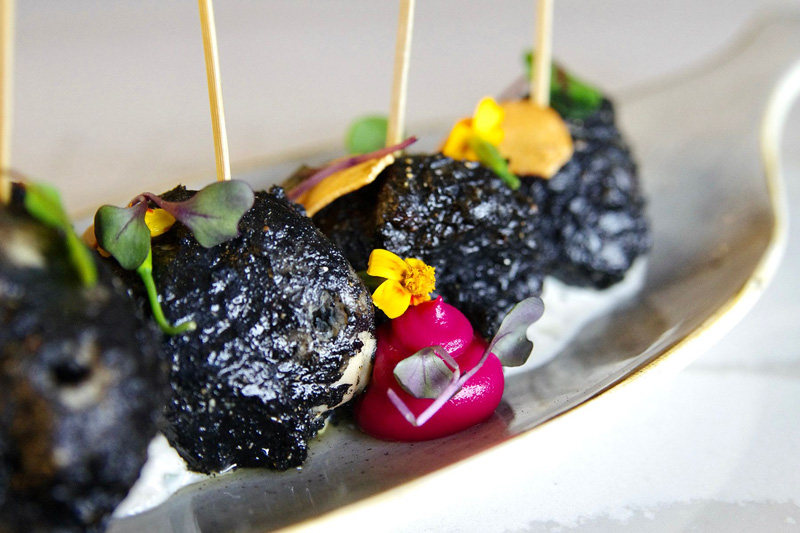
Alas, aiming for fusion and creative recombinations, Raag, it seems, has ended up with a sort of split personality. As seen with the seafood entrees, it seeks to appeal to the (well-heeled) masses with comforting and approachable food. Other dishes exemplify its efforts to dazzle with cutting-edge ingredients, preparations, and presentations. Hence, the smoke dome. It’s evident with other items, too, such as tandoori chicken ($16) coated (i.e., “blackened”) with edible charcoal. Beyond looking cool (if you’re into gothic fowl), the charcoal only serves to make the dry chicken dryer. The only flavors I could discern in the dish came from garnishes and accompaniments—slivers of fried garlic, edible flowers, and dollops of beetroot gel.
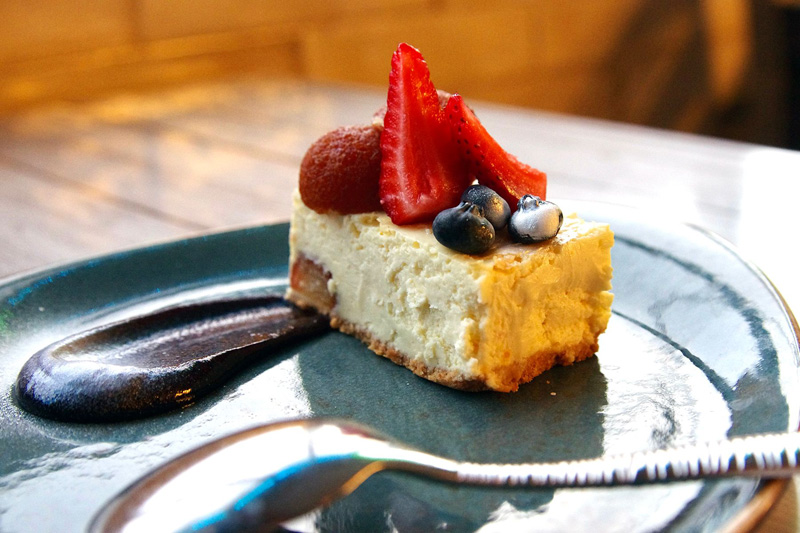
Gulab Jamun cheesecake ($12) also tries but fails to wow. Stuffing run-of-the-mill cheesecake with treacly, dried out fried ricotta balls is a recipe for disaster… and incredible thirst. The presentation, at least, was unintentionally and amusingly puerile: Two big balls squished together with a slice of a fruit that leaned to the left adorned the dessert.

Raag’s efforts to impress visually hit the mark with other dishes. Take for example, butter masala paneer ($20). A beautiful earthen bowl filled with vivid orangish red sauce, slabs of seared cheese, and micro greens with purple stems is stunning. An appetizer starring cauliflower fritters ($15) is similarly attractive. Fried to a golden brown, the florets rest on a gleaming red sauce (think sweet and sour) and beside a creamy, saffron-infused dip.
Other presentation decisions were head-scratchers, none so much as the “Baingan Bhartha Moussaka” ($20). Why stuff tasty, mashed curry between a stack of flavor-challenged rounds of baked eggplant? The brownish purple edifice is unappetizingly ugly—even with a few edible flowers and sprigs of micro-greens placed on top.
The hospitality at Raag was as helter-skelter as the food. On my first visit, I sat with my wife at the bar. The bartender was friendly and helpful, until things got busy. Once the bar filled and the drink orders piled up, he didn’t have time for us, and nobody else lent him a hand. When we inquired about the spices in a dish, he handed us a menu, as if to say, “Look it up yourself.” Later, conflict between the bar staff created tension as thick as the smoke that accompanied Raag’s signature cocktail. We were relieved to get out of there. On the second visit, the staff was universally friendly and attentive, but didn’t seem to know much about the food or drink. And even though I reserved a table, we were given a high-top in the crowded, loud bar area. (A fundraiser occupied the dining room.) At a cheaper, humbler restaurant, I’d have more patience with sub-par hospitality.
I appreciate that Raag is trying to go big and take chances. At least for now, however, it lacks a coherent identity or clear vision. It bills itself as a “Progressive Indian” restaurant. I still have no idea what “progressive” means in this context. Worse, I get the sense that Raag’s ownership doesn’t either.
Raag Progressive Indian Cuisine, 3812 W 50th St, Minneapolis, 952.405.8367, 11am-2:30pm, 4-9pm DAILY

